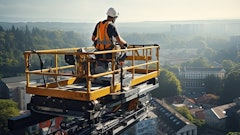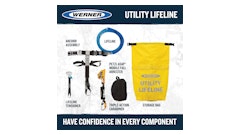
In the American working industry, some of us are familiar with what we know as OSHA and their famous statement that is used when the agency does not have a specific standard to address a safety infraction; referred to as the General Duty Clause which states the following:
“Each employer shall furnish to each of his employees’ employment and a place of employment which are free from recognized hazards that are causing or are likely to cause death or serious physical harm to his employees.”
Although we are familiar with this statement, do we always successfully recognize all of those hazards? What if we don’t correctly identify hazards because of an incorrect perspective or unhealthy risk appetite? For example, thirst as an indicator of systemic dehydration?
Did you know that despite living in a nation with ready access to clean drinking water, a shocking 75% of Americans are chronically dehydrated?1 This statistic is not just a number, but a nationwide health concern that needs to be addressed.
This article will address these issues and contribute to some practical measures we can do for workers in the road construction industry specifically. It's easy to state that we should equip all work areas with accessible and visible cool water (less than 60° F). Encourage workers to drink at least 1 cup (8 ounces) of water every 15-20 minutes while working in the heat, not just when they're thirsty. Maintain a cool or shaded location for rest breaks.2
Holistic Approaches To Heat-Related Illness Prevention On The Road
One perspective that should be adopted is to be a proactive, generative lead-performer on these issues, rather than simply complying with minimum requirements. This will help us go above and beyond the norm. 
When I entered the Asphalt Industry I quickly learned what the laborers and road crews must endure to pave what we, as citizens, all too often take for granted.
Our road crews face many risks and hazards such as: working around heavy equipment, distracted drivers, and more, but what can we, as producers and business owners, do to bring down the heat related risks and reduce the resulting illness?
Firstly, you can and should evaluate your current plans, best practices, and proactive measures. Then increase the importance of communication and question the execution of your team's implementation of those plans. Ultimately, much of the success of a plan lies within the individual worker, but the care their leaders have for them makes a serious impact.
One item that could be easily overlooked is proper record keeping and documentation. Sometimes, we might overlook it when our employees are experiencing a heat-related illness just to keep moving forward with the day's work. In today’s era, where hard work is sometimes not as valued as it was before. So, in response, we must bring back the human care aspect of it all. We should not need OSHA or any other agency to be the driver for our change, because WE should be the agents of positive change within our own companies. That should go from the tons of asphalt being laid and the profits made from it, all the way to the very health of our employees.
When You Can't Stand The Heat, But You Can't Get Out Of The Kitchen Either
The first step to developing your heat-related illness prevention plan is to recognize the gaps in your current way of addressing this hazard. Since, in the asphalt industry, heat is everywhere, you might think that we cannot do anything different to avoid the consequences. The asphalt is hot, the pavers generate heat, then the weather is hot, and that can increase and compound the heat of asphalt in general.
When I came into the industry, one thing that didn’t take long to realize, is that asphalt is historically a, “get-er-done,” type of environment that is seemingly facing a different generation that doesn’t adopt the same attitudes and values. Because of this, we have asked a different generation to push past their feelings without plans that address them, and this has been to our own detriment -- often felt in our teams, morale, and succession planning goals.
However, understanding the importance of recognizing heat-illness and its symptoms, considering the voice of the employee, and measuring the practicality of implementation in our unique industry is the key. I am sure many companies throughout the United States have great programs that are being maintained, but there are surely some companies that need a fresh look in order to revitalize and protect the health of their employees.
One way of doing that is to familiarize our teams on heat-related triggers. The keys are both prevention and planning. If you see a heat wave coming, you should be creative and think ahead. Why? Nothing stops a job, quicker than having to call an ambulance.
Make the heat plan part of your normal work plan for the day. Some practical items that you need to consider concerning our industry:
- Inspect What You Expect
- Implementation and Execution: Is it Making a Difference?
- Compliance vs Specificity
- State specific requirements
- Resources and training materials
The topic surrounding heat illness prevention might be considered a small topic, but it has a big impact. I came from the plastics manufacturing industry, which heat, and heat exhaustion was a constant struggle, due to the nature of a 24-hour operation. I carried a passion for it with me into our asphalt teams. The first year was about spending a lot of time with the crews, driving with the foreman, walking alongside the road crews, and standing on the screed in the heat. I experienced intense sweating, endured headaches, achy muscles, and complete exhaustion so that I could understand the challenges our workers face every day. It gave me real empathy for the situation, and out of that, Iproposed an initiative to boost morale and health awareness.  Provided by Duval Asphalt
Provided by Duval Asphalt
How did we accomplish this? From my position I cast vision of how we can implement additional heat related safety measures. I coordinated with our local safety equipment distributor to coordinate the following:
Hot Summer Kits: This would be a cooler or easy transportable box with all the cooling PPE a crew might need for the week:
- Sweatbands
- Cooling towels
- Hard hat cooling pads or hard hat visors
- Ball caps
Cooling Tours: Biweekly site visits to the jobs to promote and provide heat relief:
- Company safety leaders could partner up with local safety equipment distributors to cover an approximately 25 mile radius of the total job locations.
- Hydration product distribution
- Tool talks
- Educational awareness of heat stress and facts / prizes
Hydration Stations: These could be strategically set up during hot months at the jobsite. It would provide the crew members a place they could take a quick cooling break in between waves of paving. Umbrellas and coolers with fresh cold fruit and water to eat and drink. Also, it will have a barometric meter to measure humidity, to ensure our guys are hydrating frequently enough:
- Set up
- Pop-up tent / umbrella
- Coolers : Ice pop/ squinchers /cold fruit cups / watermelon chunks
- Chairs: If you have guys that need to sit in the shade they can at this station.
- At this hydration station the tail-gate talk / pre-shift huddle can occur:
- Water cooler
- Electrolytes and Ice jugs
- Encourage the tricks of the trade: pickles and coconut water!
- Discuss the days project/quality aspects/safety tooltalk
- Promote stretching before starting the job
Appreciation: Monthly Health Vital Checks: Coordinated with local healthcare company to promote wellness. Held at a monthly frequency and accompanied by an appreciation lunch:
- Partner with independent providers for their services to improve companies in our industry.
- Provide education and awareness
Getting Everyone Involved
The other approach we took at Duval Asphalt was focused on employee engagement. During our safety team meetings, we would brainstorm new ideas for creating shade in difficult areas where setting up a tent might not be possible. This increased management commitment. We coordinated with our plant manager who designed a clever extension that is used on the foreman trucks, as well as, another extension that works for the service trucks. It was there that we placed a portable umbrella for when the crew needed a break and some extra shade.
Something we must always consider is: are we truly adhering to what we have written down? Do you have a plan? Does it fit the bill? What is your stake in it? Do you have skin in the game? What are the challenges that agencies and state plans present for you? How are you addressing them?
As business owners and producers, we should embrace every aspect of what it takes to make the business run. The health and safety of our employees plays a major role, specifically in an industry where our workforce is aging, and every slight innovation and implementation could boost morale, preserve health, increase productivity, and contribute to the longevity of the art of making roads. Stay safe and stay cool!


























